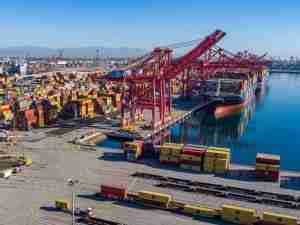Libya Oil-Export Terminal Said to Re-Open as Crude Output Rises
By: Saleh Sarrar | Jan 04 2017 at 04:00 PM | Ports & Terminals
Libya is re-opening its last major oil-export terminal that was shut amid fighting that hobbled output in the country with Africa’s largest crude reserves.
The Zawiya terminal is preparing to resume exports after the pipeline supplying it was re-opened, an official at the state-run National Oil Corp. said, asking not to be identified for lack of authorization to speak to news media. With Zawiya shipping, all nine of Libya’s main oil ports would be exporting. The country is revving up its oil industry just as most of its OPEC peers are cutting production to counter a glut.
Libya currently pumps 700,000 barrels a day of oil, the NOC official said Wednesday. That’s up from 580,000 barrels a day in November and 520,000 in October, data compiled by Bloomberg show.
The North African country plans to almost double output in 2017. Last month it re-opened two of its biggest oil fields and began loading the first crude cargo in two years from its largest export terminal, Es Sider. Libya’s comeback will put pressure on the Organization of Petroleum Exporting Countries and the other major producers that agreed to start cutting output this month in a drive to shore up crude prices.
Benchmark Brent crude has dropped by about half from its 2014 peak of more than $115 a barrel. Brent was trading Wednesday at $55.77 a barrel in London at 3:49 p.m. local time.
Sharara Field
Libya in December re-opened the Sharara oil field, which supplies Zawiya, allowing for exports to resume from the terminal in western Libya. Almost 1.9 million barrels are set to load from Zawiya this month, according to a loading program obtained by Bloomberg. That compares with a pumping rate from Sharara of almost 9 million barrels a month as recently as late 2014, before the country’s internal conflict halted flows.
Libya pumped about 1.6 million barrels a day before an uprising in 2011 toppled the nation’s leadership. International oil companies pulled out as rival governments and militias struggled for control of Libya’s energy assets, and oil output plunged to as little as 45,000 barrels a day in August that year.
With production rising, NOC Chairman Mustafa Sanalla said on Dec. 21 that output would reach 900,000 barrels a day early this year and 1.2 million barrels a day by the end of 2017.








_A_-_28de80_-_38f408a0a1c601cdbf9fe70c9d30a28084a5da3d_lqip.jpg)
